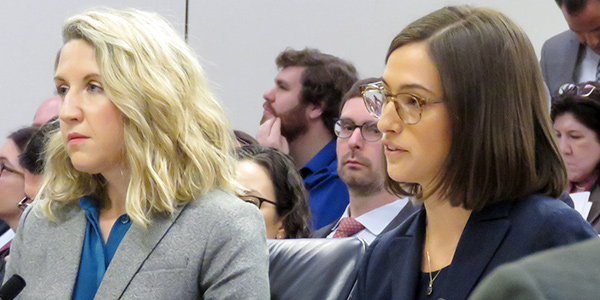By Rich Heidorn Jr.
WASHINGTON — FERC on Thursday finalized a streamlined licensing process for hydropower projects at non-powered dams and closed-loop pumped storage projects, a response to a Congressional directive.
Under the new rule, the commission said it “will seek to ensure a final decision” within two years after receipt of a completed license application (Order 858, RM19-6).
Chairman Neil Chatterjee said the commission completed the rulemaking with three days to spare under the 180-day deadline set by Congress in the America’s Water Infrastructure Act of 2018, which became law in October.
The expedited rules will apply to existing non-powered dams that are not already licensed or exempted from the licensing requirements of the Federal Power Act. The facilities must generate power through “withdrawals, diversions, releases or flows” from non-powered dams and must not make any material changes to the storage, release or flow operations of the dams.
Closed-loop pumped storage projects can qualify if they cause little or no change in existing surface and groundwater flows and uses and are unlikely to adversely affect threatened or endangered species. Reservoirs at natural waterways, lakes, wetlands and other natural surface water features would not qualify.
The rule permits only temporary withdrawals from surface waters or groundwater for the “initial fill and periodic recharge” of the storage facility.
The rule requires developers to document their consultation with stakeholders, including tribes, dam owners and federal and state agencies responsible for required authorizations under the Clean Water Act, the Endangered Species Act and the National Historic Preservation Act.
Applicants for projects at a non-powered dam must prove the owner of the dam is not opposed to hydropower development. Projects using any park, recreation area or wildlife area created by state or local law must provide documentation that the managing entity is not opposed.
FERC said it issued the new rule after consulting with 28 federal agencies, state agencies and tribes, which participated in an interagency task force.
The new licensing option will be voluntary and will not change the commission’s current three prefiling process choices for developers to use in preparing license applications.
“I hope that we have a large number of license applicants” under the new rule, Commissioner Cheryl LaFleur said. “There are approximately 80,000 unpowered dams in the United States. Many of them are probably not suited for power production, but some of them are and could be brought online to help contribute reliable, carbon-free flexible electricity.”
The rule will take effect 90 days after publication in the Federal Register.





